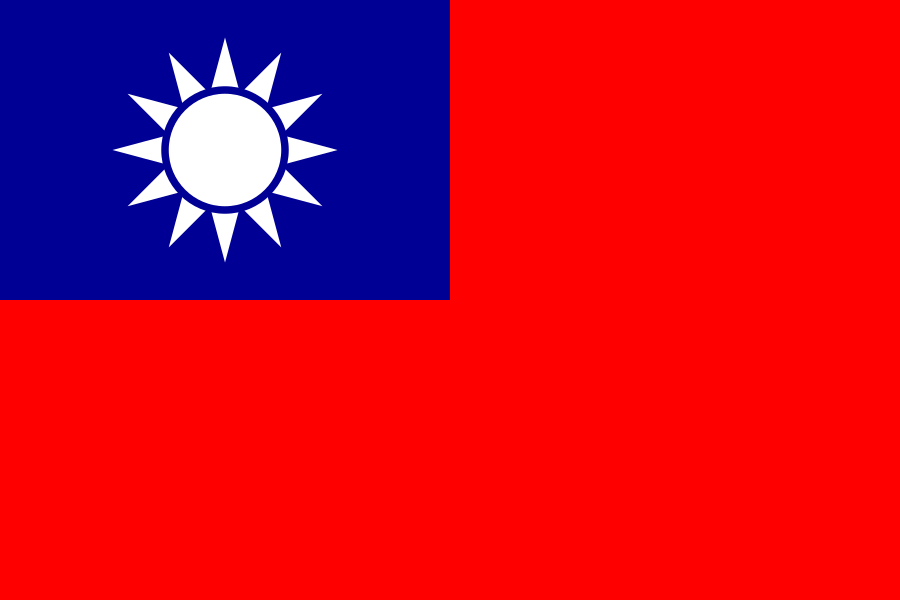Taiwan Travel Fact Sheet
Contents
Basic Info
Country Name
Taiwan, but offically Republic of China
What the People are Called
Taiwanese and/or Chinese
Ethnic Groups
About 98% of Taiwan's population is of Han Chinese ethnicity. Of these, 86% are descendants of early Han Chinese immigrants known as the "benshengren" (Chinese: 本省人; pinyin: Běnshěng rén; literally: "home-province person") in Chinese. This group is often referred to "native Taiwanese" in English, but the term is also frequently used for the Taiwanese aborigines. The benshengren group contains two subgroups: the Hoklo people (70% of the total population), whose ancestors migrated from the coastal southern Fujian (Min-nan) region in the southeast of mainland China starting in the 17th century, and the Hakka (15% of the total population), whose ancestors originally migrated south to Guangdong, its surrounding areas and Taiwan.
About 12% of the population are known as waishengren (Chinese: 外省人; pinyin: Wàishěng rén; literally: "out-of-province person"), composed of people who emigrated from mainland China after 1945. The existence of Fuzhou people can be traced to the Matsu islands of Republic of China, they make up about 2% of the population. The main language used by the Fuzhou people are the Fuzhou dialect and Mandarin. In order to preserve the Fuzhou dialect, Matsu island has introduced the teaching of their dialect in their elementary schools.
The other 2.25% of the population number about 522,942 Taiwanese aborigines, divided into 14 major groups. The Ami, Atayal, Bunun, Kavalan, Paiwan, Puyuma, Rukai, Saisiyat, Sakizaya, Sediq, Thao, Truku and Tsou live mostly in the eastern half of the island, while the Yami inhabit Orchid Island.
U.S. Embassy
The U.S. maintains unofficial relations with the people of Taiwan through the American Institute in Taiwan (AIT), a private nonprofit corporation, which performs citizen and consular services similar to those at diplomatic posts.
Canadian Embassy
6F, Hua-Hsin Building, No. 1 SongZhi Road, Xinyi District, Taipei 11047, Taiwan
Currency
New Taiwan dollar (NT$) (TWD)
Time Zone
National Standard Time (UTC+8) Summer (DST) not observed (UTC+8)
Phone/Internet Information
+886
Major Languages Spoken
Mandarin is the official national language and is spoken by the vast majority of the population of Taiwan. It has been the primary language of instruction in schools since the Japanese rule ended. As in Hong Kong and Macau, Traditional Chinese is used as the writing system in Taiwan.
Most Waishengren speak primarily Mandarin. The 70% of the population belonging to the Hoklo ethnic group speak Taiwanese Hokkien (a variant of the Min Nan speech of Fujian province) as their mother tongue, in addition to Mandarin, and many others have some degree of understanding. The Hakka ethnic group (15% of the population) use the Hakka language. Although Mandarin is the language of instruction in schools and dominates television and radio, non-Mandarin languages or dialects have undergone a revival in public life in Taiwan, particularly since restrictions on their use were lifted in the 1990s.
Fuzhou dialect are also spoken in Matsu Islands, territory of Republic of China. Most of the inhabitants speak Fuzhou as their mother tongue although Mandarin is taught in the public schools.
Taiwan's indigenous languages, the Formosan languages, do not belong to the Chinese or Sino-Tibetan language family, but rather to the Austronesian language family. Their use among Taiwan's aboriginal minority groups has been in decline as usage of Mandarin has risen. Of the 14 extant languages, five are considered moribund.
Alphabet
There are and have been several Chinese alphabets, that is pre-existing alphabets adapted to write down the Chinese language. However, the standard Chinese writing system uses a non-alphabetic script with an alphabet for supplementary use.[1] There is no original alphabet native to China. China has its Pinyin system though sometimes the term is used anyway to refer to logographic Chinese characters (sinograms). It is more appropriately used, though, for phonemic transcriptions such as pinyin.
Major holidays
- Jan 1 New Year's Day National holiday
- Jan 30 Chinese New Year's Eve National holiday
- Jan 31 Chinese New Year's Day National holiday
- Feb 1 Chinese New Year National holiday
- Feb 2 Chinese New Year National holiday
- Feb 3 Chinese New Year National holiday
- Feb 4 Chinese New Year National holiday
- Feb 4 Farmer's Day Observance
- Feb 14 Lantern Festival Observance
- Feb 14 Tourism Day Observance
- Feb 28 228 Memorial Day National holiday
- Mar 2 Earth God's Birthday Observance
- Mar 8 Women's Day Observance
- Mar 12 Arbor Day Observance
- Mar 19 Kuan Yin's Birthday Observance
- Mar 20 March equinox Season
- Mar 29 Youth Day Observance
- Apr 4 Children's Day National holiday
- Apr 5 Tomb Sweeping Day National holiday
- Apr 14 God of Medicine's Bday Observance
- Apr 20 Easter Sunday Observance
- Apr 22 Matsu's Birthday Observance
- May 1 Labor Day National holiday
- May 4 Literary Day Observance
- May 6 Buddha's Birthday Observance
- May 11 Mother's Day Observance
- Jun 2 Dragon Boat Festival National holiday
- Jun 3 Opium Suppression Day Observance
- Jun 10 Kuan Kung's Birthday Observance
- Jun 10 Chen Huang's Birthday Observance
- Jun 21 June Solstice Season
- Aug 2 Chi Hsi Festival Observance
- Aug 8 Father's Day Observance
- Aug 10 Ghost Festival Observance
- Sep 3 Armed Forces Day Observance
- Sep 8 Mid-Autumn Festival National holiday
- Sep 23 September equinox Season
- Sep 28 Teachers' Day Observance
- Oct 2 Double Ninth Day Observance
- Oct 10 National Day National holiday
- Oct 21 Overseas Chinese Day Observance
- Oct 25 Taiwan's Retrocession Observance
- Nov 12 Sun Yat-sen's Birthday Observance
- Dec 6 Saisiat Festival Observance
- Dec 21 December Solstice Season
- Dec 21 Dōngzhì Festival Observance
- Dec 25 Constitution Day Observance
- Dec 25 Christmas Day Observance
Source: Public Holidays Taiwan Source: Wikipedia Taiwan
Back to Adopting from Taiwan
